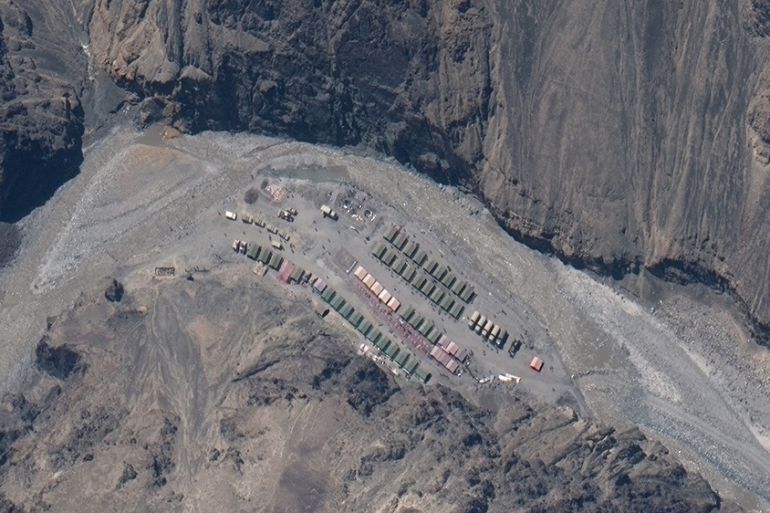China admits it lost four soldiers in 2020 India border clash
Beijing for the first time publicly concedes its side suffered casualties in deadly brawl that also killed at least 20 Indian soldiers.

China’s military said on Friday that four of its soldiers were killed during a bloody Himalayan border clash with Indian forces last June, the first time Beijing has publicly conceded its side suffered casualties in the deadliest incident between the Asian rivals in nearly 45 years.
India at the time announced it had lost 20 of its soldiers in the June 2020 fighting in Galwan Valley in the Ladakh region just opposite Tibet. Soldiers used their fists, clubs, stones and other improvised weapons to avoid an out-and-out firefight.
Keep reading
list of 4 itemsSatellite images show China emptying army camps at Indian border
How Indian and Chinese media reported the deadly Ladakh clash
Ladakh Buddhists who hailed India’s Kashmir move not so sure now
Beijing at the time acknowledged that the clash had resulted in casualties but did not confirm if any Chinese soldiers had died.
The Chinese soldiers “sacrificed themselves” during the June confrontation in the contested Galwan Valley border area with an unnamed “foreign military”, China’s defence ministry said.
The People’s Liberation Army Daily newspaper said the four Chinese soldiers and officers killed had all been bestowed with honours and named as martyrs, while a fifth was also awarded by the ruling Communist Party’s Central Military Commission.
Stepping back
The sides are now engaged in a phased withdrawal from their original positions following multiple rounds of negotiations.
Indian Defence Minister Rajnath Singh said the agreement would “substantially restore the situation to that existing prior to commencement of the stand-off last year”.

Earlier, unconfirmed reports had put the number of Chinese dead as high as 45, and Lieutenant General YK Joshi, who commands the Indian Army’s Northern Command, said Indian observers counted more than 60 Chinese troops being taken away on stretchers, though it was not clear how many had suffered fatal injuries.
Joshi told Indian station News18 that Chinese forces had appeared unwilling to make concessions until Indian forces occupied commanding heights from August 29-30. An agreement to begin pulling back was reached on February 10.
The tense standoff high in the Karakoram mountains began in early May, when Indian and Chinese soldiers ignored each other’s repeated verbal warnings, triggering a shouting match, stone throwing and fistfights on the northern bank of Pangong Lake, which is marked by eight contested ridges where rivers flow into the body of water.
By June, frictions escalated and spread north in Depsang and Galwan Valley, where India has built an all-weather military road along the disputed frontier.
Ties strained
Following the border clashes, the two countries stationed tens of thousands of soldiers backed by artillery, tanks and fighter jets along the de facto border called the Line of Actual Control (LAC) with troops settling in for the harsh winter.

Each side accused the other of instigating the violence, which has dramatically changed the India-China relationship, with New Delhi banning dozens of Chinese apps popular in India.
Relations between the two countries have often been strained, partly due to their unmarked border.
They fought a border war in 1962 that spilled into Ladakh and ended in an uneasy truce marked by additional clashes. Since then, troops have guarded the undefined border while occasionally brawling.
The fiercely contested control line separates Chinese-held and Indian-held territories from Ladakh in the west to India’s eastern state of Arunachal Pradesh, which China claims in its entirety.
According to India, the de facto border is 3,488 kilometres (2,167 miles) long, while China says it is considerably shorter. As its name suggests, the LAC divides the areas of physical control rather than territorial claims.